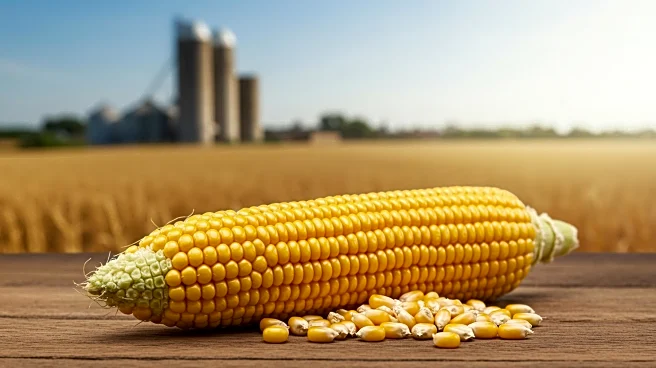What is the story about?
What's Happening?
The U.S. Department of Agriculture (USDA) has reported a decline in grain and soybean inspections for overseas delivery, according to recent data. Wheat assessments for the week ending August 14 were recorded at 395,240 metric tons, a decrease from 414,865 tons the previous week. However, this figure remains higher than the 374,304 tons inspected during the same week last year. Corn inspections totaled 1.05 million metric tons, down from 1.52 million tons the week prior and 1.22 million tons at the same time last year. Soybean inspections also saw a decrease, coming in at 473,605 metric tons, down from 544,246 tons the previous week but up from 406,240 tons in the same week of 2024. Despite the weekly decline, overall inspections since the start of the marketing year show an increase, with corn inspections at 64.2 million metric tons, up from 50.2 million tons a year earlier, and soybean inspections at 48.9 million metric tons, compared to 43.8 million tons last year.
Why It's Important?
The decline in weekly export inspections of grains and soybeans could have implications for U.S. agricultural exports and market dynamics. While the weekly figures show a decrease, the overall increase in inspections since the start of the marketing year suggests strong demand for U.S. agricultural products. This trend is significant for farmers and exporters as it may influence pricing and trade strategies. Additionally, favorable crop conditions, as indicated by the ProFarmer Crop Tour, suggest potential for high yields, which could further impact market supply and pricing. The USDA's data provides critical insights for stakeholders in the agricultural sector, including farmers, exporters, and policymakers, as they navigate the complexities of global trade and domestic production.
What's Next?
As the USDA continues to monitor export inspections, stakeholders in the agricultural sector will likely focus on adjusting their strategies to align with market demands and crop conditions. The ongoing ProFarmer Crop Tour results, which indicate favorable conditions for corn and soybean crops, may lead to increased production forecasts and influence future export volumes. Additionally, the extreme heat warnings across the Midwest could impact crop conditions and harvesting schedules, potentially affecting future inspection figures. Farmers and exporters will need to remain vigilant in adapting to these environmental and market changes to optimize their operations and maintain competitiveness in global markets.
Beyond the Headlines
The USDA's report highlights the intricate balance between domestic agricultural production and international trade. The fluctuations in export inspections underscore the challenges faced by U.S. farmers and exporters in maintaining consistent supply chains amid varying environmental conditions and global market demands. The data also reflects broader economic implications, as agricultural exports play a crucial role in the U.S. economy. Understanding these dynamics is essential for policymakers and industry leaders as they develop strategies to support the agricultural sector and ensure food security.
AI Generated Content
Do you find this article useful?











